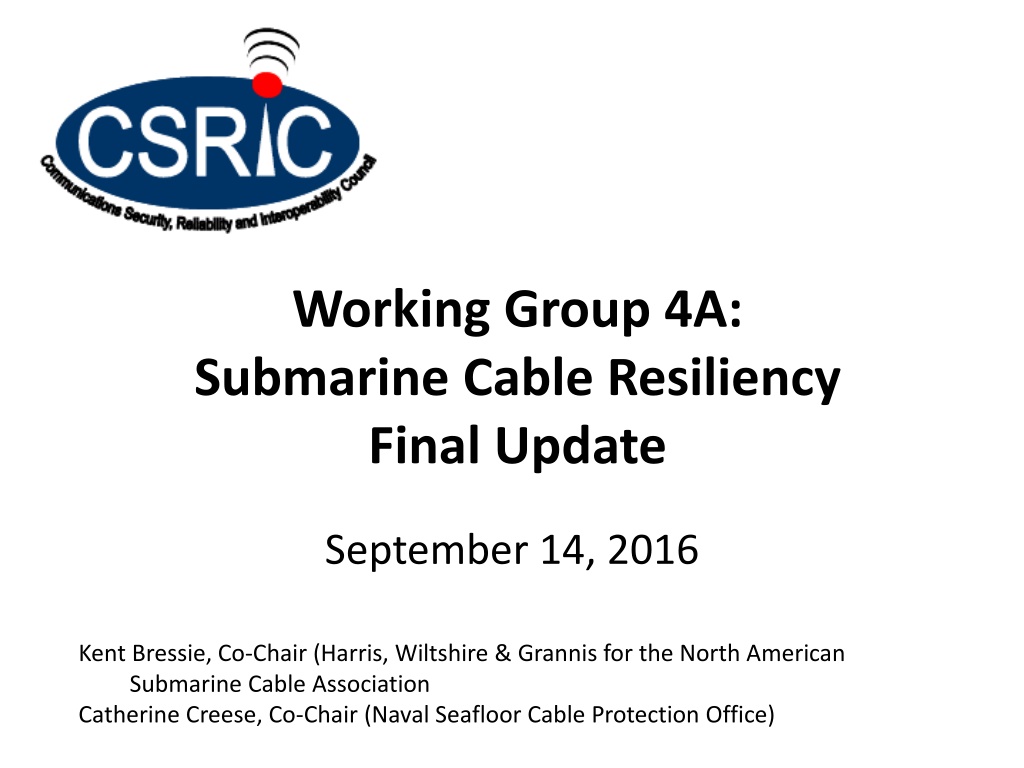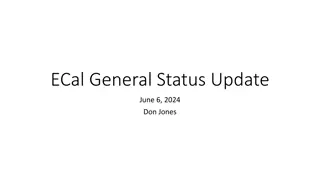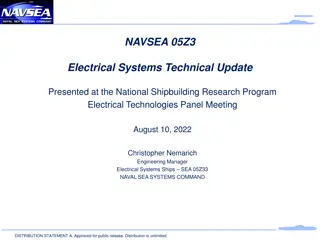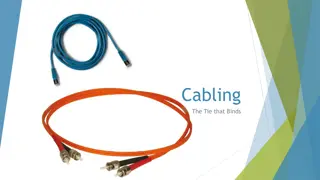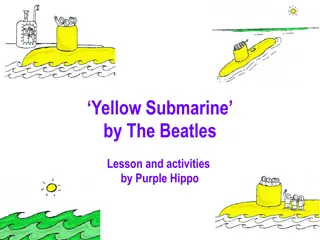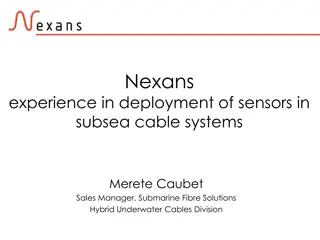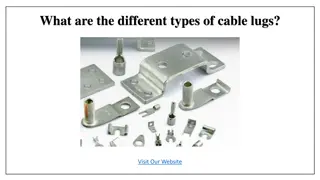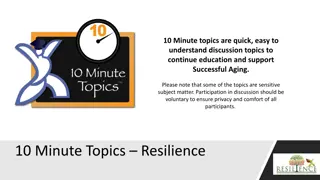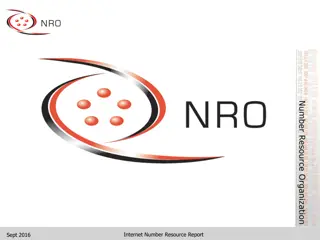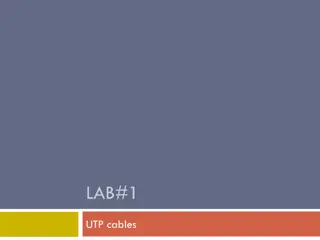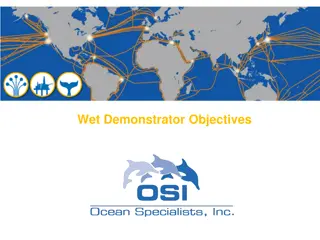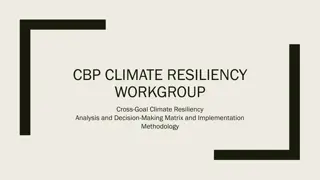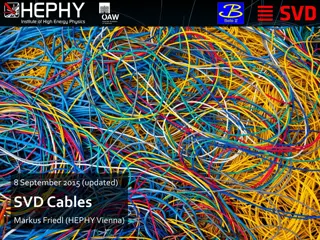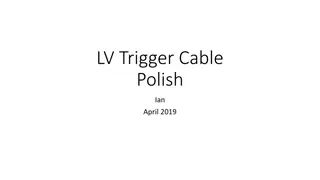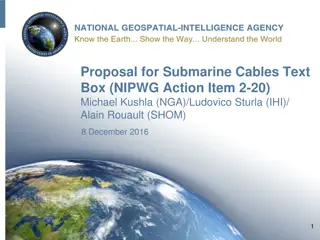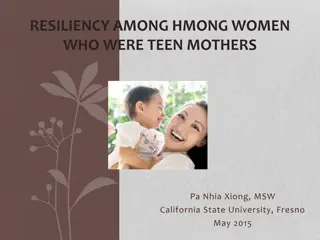Submarine Cable Resiliency Report Update - September 2016
This update presents the final findings of Working Group 4A on Submarine Cable Resiliency, focusing on the importance of coordinating federal, state, and local agencies to mitigate risks to submarine cable infrastructure. The report highlights the critical role of regulatory coordination and geographic diversity in enhancing U.S. network resilience and protecting submarine cables that handle a significant portion of U.S. traffic. Key deliverables include reports on regulatory coordination and promoting geographic diversity in cable routes and landings.
Download Presentation

Please find below an Image/Link to download the presentation.
The content on the website is provided AS IS for your information and personal use only. It may not be sold, licensed, or shared on other websites without obtaining consent from the author.If you encounter any issues during the download, it is possible that the publisher has removed the file from their server.
You are allowed to download the files provided on this website for personal or commercial use, subject to the condition that they are used lawfully. All files are the property of their respective owners.
The content on the website is provided AS IS for your information and personal use only. It may not be sold, licensed, or shared on other websites without obtaining consent from the author.
E N D
Presentation Transcript
Working Group 4A: Submarine Cable Resiliency Final Update September 14, 2016 Kent Bressie, Co-Chair (Harris, Wiltshire & Grannis for the North American Submarine Cable Association Catherine Creese, Co-Chair (Naval Seafloor Cable Protection Office)
WG4A Objectives WG4A s work builds on that of CSRIC IV s WG8, which analyzed the physical risks to submarine cable infrastructure and recommended spatial separation distances. WG4A examined how lack of coordination across federal, state, and local agencies and clustering of cable routes and landings can increase the risk of cable damage and harm U.S. network resilience. Cable protection remains critical, as submarine cables carry approximately 99 percent of U.S. traffic with the rest of the world, not to mention Alaska, Hawaii, and U.S. territories. 2
WG4A Deliverables Regulatory Coordination Report: examined gaps, conflicts, and sources of delay in existing federal, state, and local interagency coordination for submarine cable and other marine activity and infrastructure permitting and recommend mechanism for enhancing coordination without increasing regulatory burdens. Geographic Diversity (Clustering) Report: addresses industry best practices and government policies for promoting geographic diversity of submarine cable routes and landings. 3
WG4A Members Steve Balk (Sprint) Stephen Bowler (FERC) Allan Creamer (FERC) Seth Davis (SRD Associates) Jennifer Golladay (BOEM) Kurt Johnson (Pacific Crossing) Amy Marks (Xsite Modular) Jennifer Miller (BOEM) Mikal Modisette (Verizon) Wayne Pacine (Board of Governors, Federal Reserve System) Ron Rapp (TE SubCom) Neil Rondorf (International Cable Protection Committee) Nikki Shone (Southern Cross Cables) Rick Spencer (CenturyLink) Takahiro Sumimoto (Pacific Crossing) Bob Wargo (AT&T) Al Wissman (NOAA) 4
Diversity of routes and landings report Report builds on: CSRIC IV Report on Spatial Separation, which highlighted the risks to submarine cables and the use of geographic diversity, and CSRIC V Report on Intergovernmental and Interjurisdictional Coordination, which highlighted the need for better coordination to enhance cable protection in the course of regulating other marine activities. Report addresses: Key concepts Factors influencing routing and landing Recommendations for further FCC action 5
Factors influencing routes and landings Economic opportunities and differing costs of routes and landing points Seafloor topology Regulatory factors Prohibitions on cables or required locations Ease of permitting and fees Variation between regulations or application in different jurisdictions Proximity to other marine infrastructure Access to terrestrial networks 6
Recommendations 1. Encourage Interagency and Interjurisdictional Cooperation Cooperating agencies should seek to streamline permitting; adopt more transparent and consistent permitting processes, conditions, and timelines; and reduce permitting times. With lengthy permitting timeframes, any location that offers a slightly shorter permitting timeframe becomes a much more attractive option in order to satisfy time to market concerns that confront new submarine cable developers even the resulting location reduces geographic diversity of submarine cables. Streamlining across multiple jurisdictions would serve to reduce regional disparities, while reductions in overall permitting timeframes would render less critical any small variations in permit timing and burdens. 7
Recommendations 1. Encourage Interagency and Interjurisdictional Cooperation (continued) As part of this process, the FCC should consult with the Army Corps of Engineers regarding variations in the processes and permit conditions employed by its various districts. The FCC should consider adoption of a submarine cable permitting shot-clockfor state and local permitting for submarine cables as a means of highlighting the significant disparities in timing that submarine cable operators experience, and as a basis of potential future interjurisdictional discussions, including through the regional planning bodies. 8
Recommendations 2. Encourage Other Agencies to Consider Impacts On Submarine Cable Diversity During Permitting Processes FCC should encourage other federal, state, and local government agencies to consider impacts on cable diversity during permitting for other marine activities. As demonstrated in the CSRIC IV Report on Spatial Separation, there already exists a problem in protecting existing submarine cable infrastructure from damage by other marine activities as authorized by other federal, state, and local government agencies. Similarly, there is a lack of awareness and/or focus on foreclosure of particular submarine cable routes and landings, and on reductions in geographic diversity of cables through authorization of other marine activities. 9
Recommendations 3. Evaluate the Role of NEPA and CZMA as a Coordination Mechanism FCC should decline to rely on the National Environmental Policy Act ( NEPA ) or the Coastal Zone Management Act ( CZMA ) as the principal means of coordinating with other federal, state, and local government agencies. NEPA exists to identify and evaluate potential environmental impacts of activities authorized by federal agencies. CZMA exists to coordinate environmental protection efforts between federal and state agencies, permitting the adoption of state coastal zone management plans approved by the Secretary of Commerce and consistency reviews by states regarding potential effects within state territorial seas. Neither of these laws is a marine spatial planning law designed to optimize the use of marine and coastal areas for particular activities of national importance, whether for telecommunications and Internet connectivity or renewable energy development. Neither tasks government agencies with assessing the impact of proposed activities on telecommunications network resilience. 10
Recommendations 4. Promote Further Industry-to-Industry Cooperation FCC should promote further direct industry-to-industry coordination to enhance diversity of submarine cable routes and landings. The submarine cable industry has long engaged in direct consultations with other marine industries, particularly the commercial fishing industry and offshore oil and gas industries, to mitigate harmful impacts to their respective activities, equipment, and infrastructure. While such industry efforts are sometimes insufficient, they should not be supplanted entirely by governmental solutions. In coordinating with other federal, state, and local government agencies, the FCC should recommend processes that encourage other marine industries to coordinate with submarine cable operators at the earliest stages of project planning, and vice versa. 11
